Death Valley is a national park that surprised me. In my head, when I thought about Death Valley, I pictured a barren wasteland. While that image does exist in some areas of the park, you’ll find much more than that. There’s scenic drives, incredible overlooks, hiking, and much more.
Things to Do in Death Valley National Park
This is by no means an exhaustive list of things to do in Death Valley, but rather a list of some of the top sights. It’s the things that you should focus on—especially if you have limited time at Death Valley National Park.
This article is grouped into sections so you can easily jump to what interests you the most. That said, it’s in no particular order. But if you want my opinions on the best of Death Valley, you’ll find those later in this post.
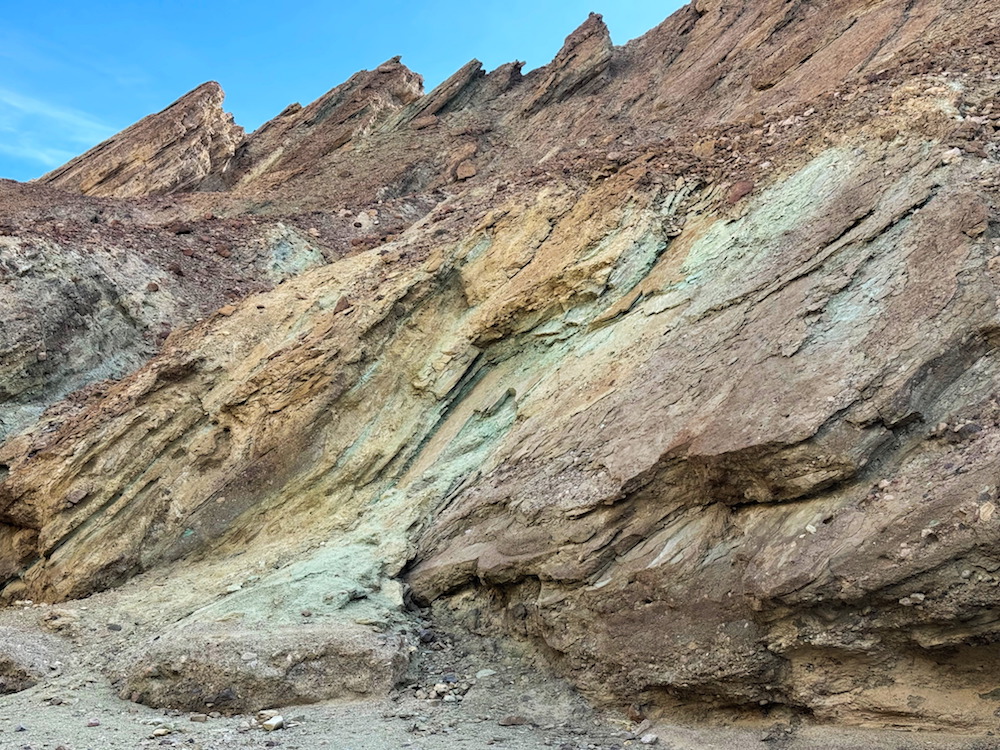
Scenic Drives
I love a good scenic drive, so I’m starting this list of things to do in Death Valley with two excellent scenic drives.
Artist’s Drive
This scenic drive is a favorite among travelers and I have to admit that my mom and I were no exception. The main drive through Death Valley National Park isn’t super eventful, so the scenic drives help to offer some variety and magnificent scenery. Artist’s Drive was our favorite of the two scenic drives that we did in the park (although both were excellent).
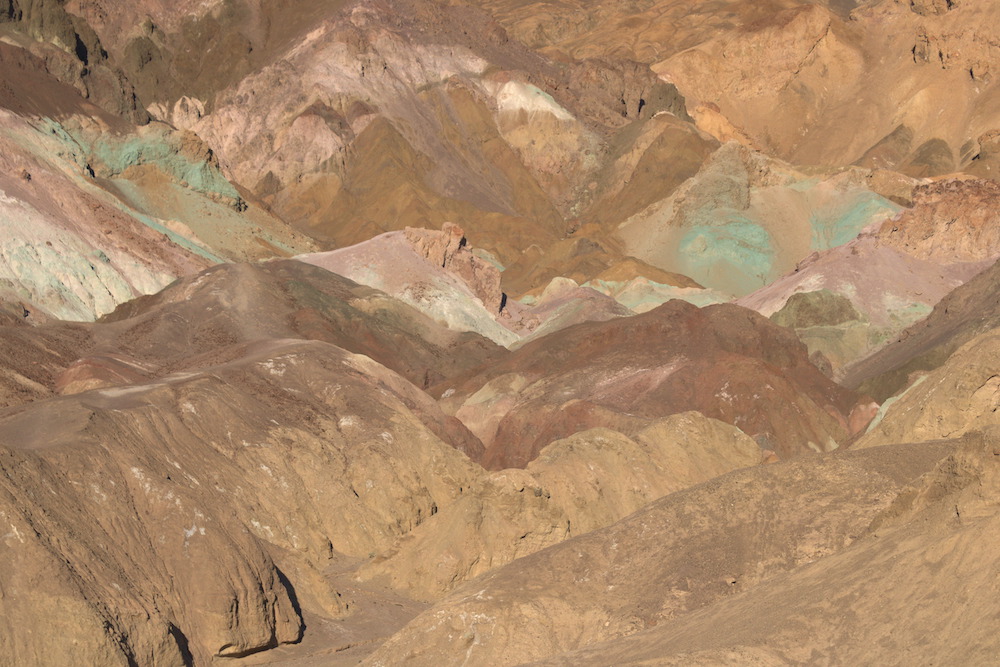
This drive takes you through the mountains where the different mineral deposits help to turn the mountains more colorful. Don’t skip Artist’s Palette, the major stop on this drive, which highlights the mineral deposits and colors beautifully. And if you’re a Star Wars fan, you may recognize some of the scenery.
Artist’s Drive is nine miles of windy, colorful roads.
Twenty Mule Team Canyon
Another scenic drive is Twenty Mule Team Canyon. In my opinion, this felt more adventurous than Artist’s Drive. It’s beautiful, but it was just fun to drive. While Artist’s Drive has more of the colors, Twenty Mule Team Canyon Drive is mostly all yellow. But don’t let that stop you.
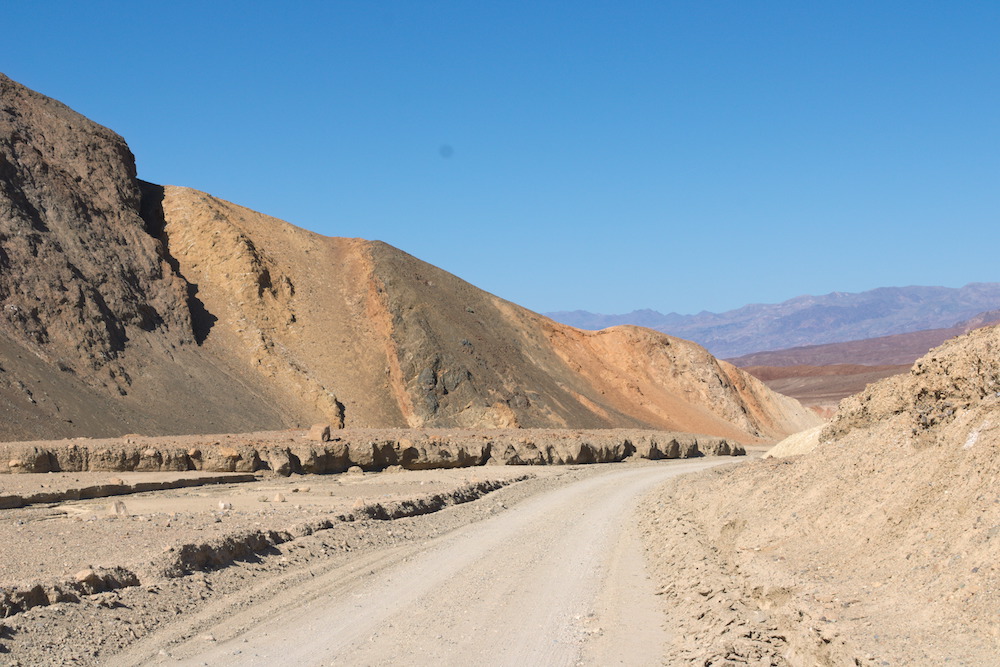
Along this drive, you’ll pass mountains of packed sand and clay. While it doesn’t sound that interesting, I promise that it is a cool view (especially after the highway driving to get to Death Valley National Park). The road is short, only 2.5 miles, but it takes a little longer than you may expect thanks to the windy, dirt roads.
Viewpoints
Now let’s talk about viewpoints. Sure there’s nice views all over Death Valley National Park, but a few are so good that they are given their own name.
Dante’s View
Dante’s View may seem a bit out of the way and to some extent it is. It’s a 13 mile drive off of the main road through Death Valley National Park. And once you’re on that 13 mile road, you don’t pass much else in terms of attractions. However, the drive gets more scenic, the closer you get to Dante’s View, so it’s not that bad of a drive.
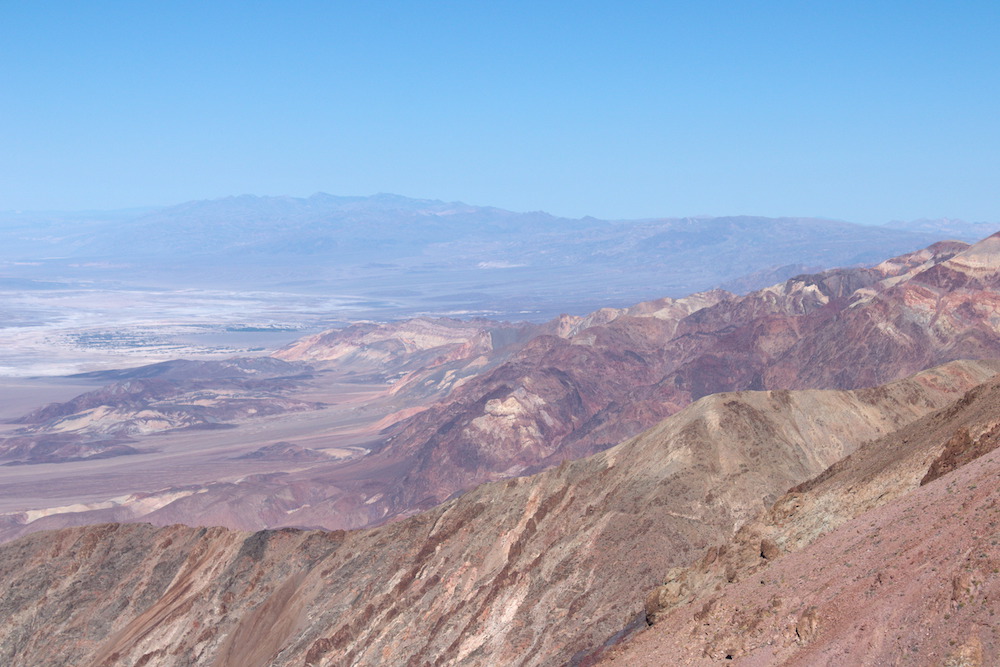
Dante’s View feels like a contrast to the rest of Death Valley. At Dante’s View, you’re at over 5,000 feet above sea level. You’ll get views of the surrounding mountains, but more interestingly, you’ll be looking at Badwater Basin from above. Badwater Basin is the lowest point in the United States at 282 feet below sea level. So it’s a long way down!
At Dante’s View, you can just stay at the viewpoint by the parking lot, or you can walk on one of the paths. How far you go out is totally up to you, but don’t just limit yourself to the one overlook from the parking lot.

Zabriskie Point
Zabriskie Point is another beautiful viewpoint, but to get here, you need to do a little walking. From the parking lot, it’s a 0.4 mile round trip walk on a paved sidewalk to get to the viewpoint. It’s uphill, but just barely—you’ll only walk up about 50 feet in total.
Your reward is another sweeping view over the mountains.

Hikes
I couldn’t write a list of things to do at Death Valley National Park without including some hikes.
Darwin Falls
This is one hike that we didn’t get to do at Death Valley National Park. Why? Because in 2023, Hurricane Hilary washed away the entire trail. I imagine that at some point, the trail will be reestablished, which is why it’s included it on this list. Plus, this was on our list of things to do at Death Valley, but Mother Nature had other plans.
The trail to Darwin Falls is 2 miles and has about 230 feet of elevation change. Your hike ends at a shallow pool of water in the desert. It looks like an amazing hike and it’s one that I will check out if I’m ever back in Death Valley.
Darwin Falls is located in the far western section of the park, far away from almost everything else on this list, so plan your visit accordingly.
Gower Gulch/Golden Canyon
This trail combines two different trails into a loop. Personally, I prefer a loop because it gives some different scenery throughout the entire trail, but you can definitely shorten this hike by only going part way and turning around.
We started on the Golden Canyon Trail, which you’ll share with the folks hiking to Red Cathedral. Eventually, you’ll turn to the right and hike what feels like straight up as you reach the highest point on the trail. Take in the views around you before descending. From there, it’s a very gradual descent all the way back down as you eventually meet up with the Gower Gulch Trail. The last half mile of the trail was a walk back to the parking lot and was painfully boring compared to what we had been seeing.

I logged 4.5 miles and 682 feet of elevation on this hike. It took us about 2 and a half hours, including plenty of stops for breaks and photos. There was a bit of rock scrambling, but I’m not sure if that was part of the actual trail or we just got detoured. While there were parts of the trail that were very well marked, we did lose the trail a few times. We chalked this up to hurricane damage and not an issue with the park itself. Rain and less foot traffic just made the trail more difficult to spot in our opinion.
This is the “big” hike that I did at Death Valley National Park. While it was good, I don’t know if I can rank it as one of the best hikes I’ve ever done in a national park. If you have the time, by all means add it to your itinerary. However, if you’re short on time, I wouldn’t be too bothered by skipping it. Or, consider just hiking part of it, even out to Red Cathedral will give you a nice taste.
Mosaic Canyon
Another hike we didn’t get to because of both time and hurricane damage. This trail is a 4 mile out and back trail that has 1,200 feet of elevation. You’ll visit Mosaic Canyon and have some opportunities for rock scrambling. The NPS has some great background information for those interested in hiking this trail.
Natural Bridge
The Natural Bridge Trail was not originally on our list, but my mom and I get distracted easily by signs to other attractions. So, after seeing the sign for Natural Bridge, we turned and followed the road to the parking lot.
The road was an adventure. I’m not sure if it was hurricane damage or this was just how the road is, but it was rough. We made it with our tiny Kia Forte rental (affectionately named Will), but we were going very slow. So, if you choose to do this, this is your warning about the road.
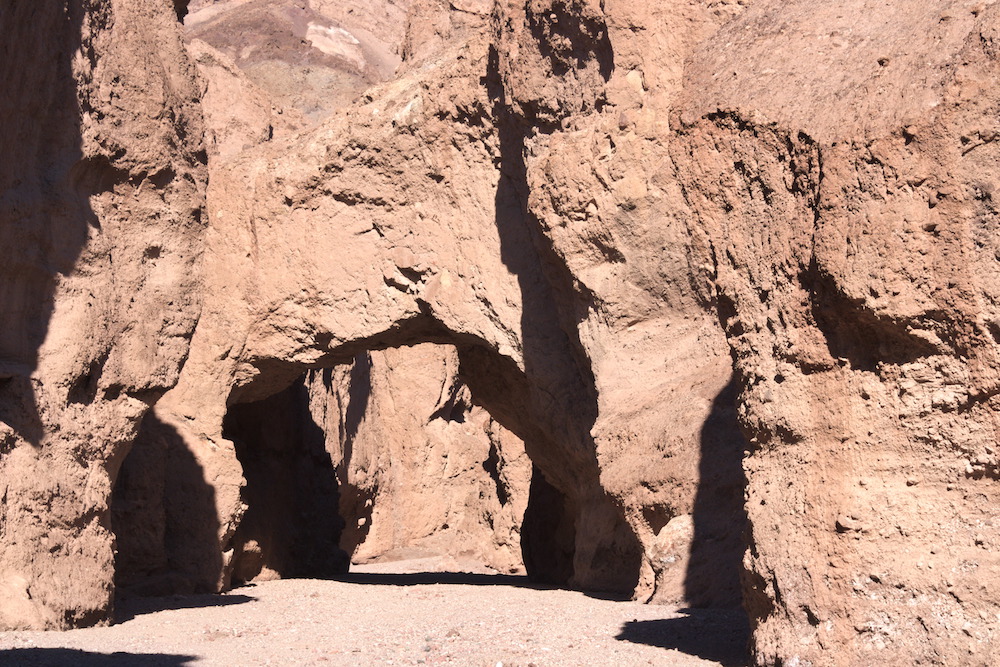
The hike to Natural Bridge is about 0.6 miles and has just under 200 feet of elevation change. It’s not a hard hike, but I don’t think it’s a particularly interesting hike. For us, the drive out here wasn’t worth it. However, if you like natural bridges, by all means, add it to your list.
Miscellaneous
Next up is a group that I wasn’t sure how to categorize. They’re viewpoints, but also not. So, here’s the miscellaneous section of the best things to do at Death Valley National Park.
Badwater Basin
Badwater Basin is the lowest point in the United States at 282 feet below sea level and is part of some expansive salt flats. So of course, you should add a stop at Badwater Basin to your itinerary. A visit here can be quick, just a short photo stop, or longer, depending on how much walking you do here.
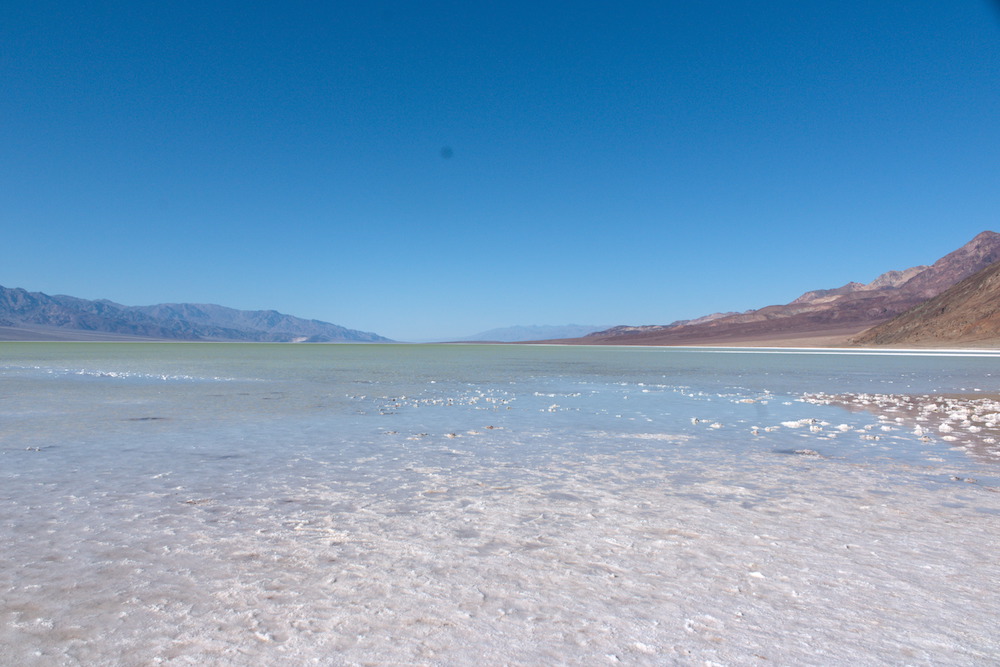
My visit to Badwater Basin was not like most. Hurricane Hilary had passed through the park three months earlier and the park was still dealing with the fallout. Yes there was some road and trail damage, but Badwater Basin was FILLED with water. Unbeknownst to us at the time, this was not normal. But I’m counting myself lucky because it was a once in a lifetime experience.
Devil’s Golf Course
Just up the road from Badwater Basin is Devil’s Golf Course. This jagged area was created by the erosion of rock salt and water and what you’re left with is something very unique.
That said, I wasn’t super impressed with Devil’s Golf Course. It’s an easy stop to add on, but I thought there were better areas of the park to explore.
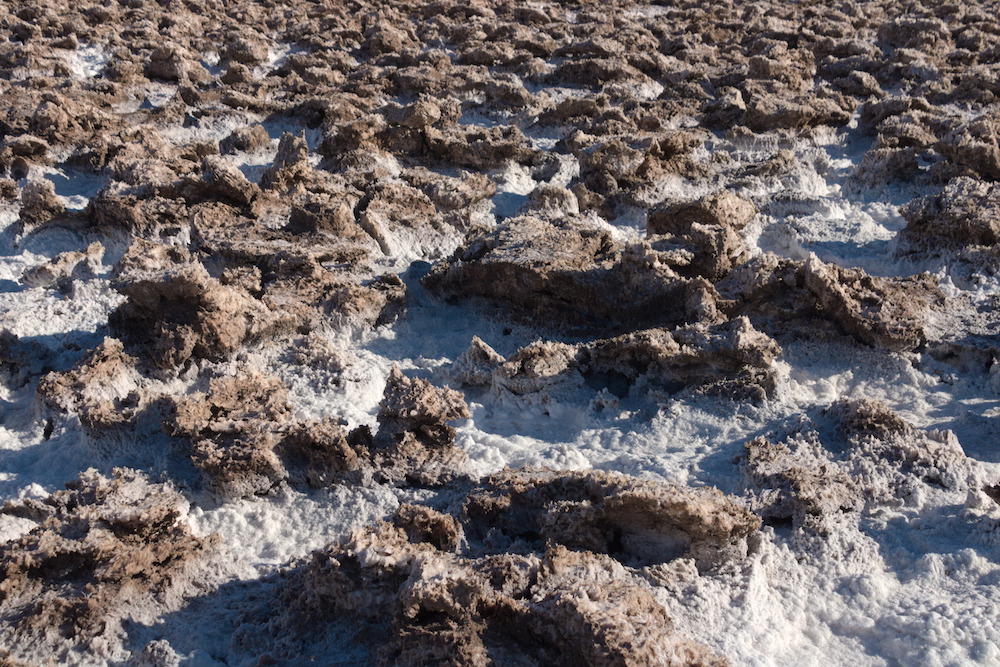
Mesquite Flat Sand Dunes
Winds swept the sands from across Death Valley into this Mesquite Flat area. While the dunes aren’t as impressive as those at Great Sand Dunes National Park, it’s still worth a quick stop—especially if you’re here during sunrise or sunset.
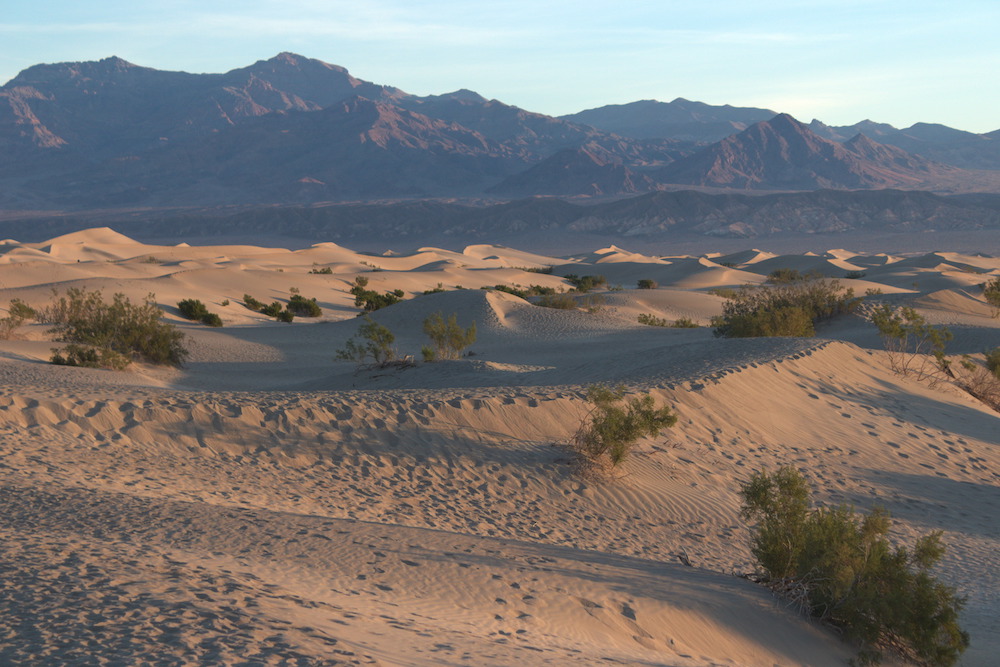
Ubehebe Crater
The road to get to the Ubehebe Crater was completely closed during my visit to Death Valley, so unfortunately I have no first hand experience. However, I had it listed as a possibility during my trip, so I’m including it on this list.
The Ubehebe Crater is massive, at over six hundred feet deep and a half mile across, and is the remains from a volcanic explosion. It’s a bit out of the way to get here, so I’d only recommend including this if you have more than one day at Death Valley.
Other Experiences
Lastly, I have two other experiences for your time in Death Valley. They just didn’t quite fit in anywhere else on this list.
Watch Sunrise or Sunset
If you’re spending the night in Death Valley, I recommend that you add this to your list. There’s something very beautiful about watching the sun rise (or set) over the surrounding areas.
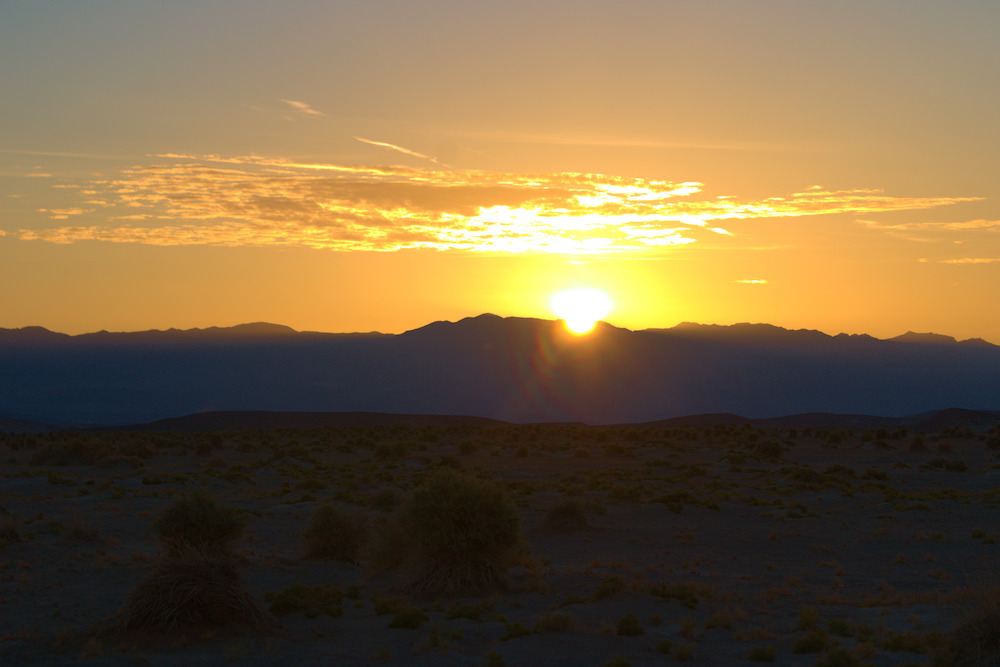
We were dealing with some hanger issues and missed sunset, but we were up early enough that we decided to find a spot for sunrise. While it’s totally possible to go to a view point (Dante’s View is recommended by the National Park Service), even just finding a pull off works. We drove just up the road from Stovepipe Wells and pulled over on the side of the road near Devil’s Cornfield. While it may not have been as stunning as Dante’s View, we still got to watch the sky change as the sun rose over the mountains.
Stargaze
In 2013, Death Valley National Park was designated as an International Dark Sky Park. Due to its lack of light pollution, you can find some great opportunities for stargazing. And if you visit during winter months, the sun sets early so you don’t even have to stay up too late. When I visited in November, sunset was at 4:45 pm, meaning by 7:30, skies were dark and the stars were out.
There’s several places you can go for stargazing, but the key is to get away from any light pollution. If you’re staying in Furnace Creek or Stovepipe Wells, you need to leave those villages. We stayed in Stovepipe Wells and drove just up the road to the parking lot for Mesquite Sand Dunes. Unbeknownst to us, this was actually a place that the NPS recommends. The stars are bright here and even for someone who grew up in a rural area, the stars were much brighter here.
My Favorites
Without a doubt my two favorite experiences at Death Valley were the scenic drives. I loved Twenty Mule Team Canyon Road and Artist’s Drive. While both are excellent, if I had to choose, I’d pick Artist’s Drive as being the best.
The hiking was good, but I didn’t do a lot of it. I preferred the Golden Canyon part of the hike I did over the Gower Gulch section. So if you’re short on time and can only do part of the 4 mile hike, I’d recommend Golden Canyon.
And I have to mention stargazing. I grew up in a rural area, but the night sky looked nothing like it did at Death Valley. If you have the chance, I’d recommend it.

Entrance Fees
It costs $30 per vehicle to visit Death Valley National Park, although annual passes, such as the popular America the Beautiful Pass, are also accepted.
As a note, Death Valley National Park doesn’t have a traditional entrance station. Instead, there are stations when you enter where you can pay your fee. Then, stop by the Visitor Center in Furnace Creek to transfer your receipt to a proper entrance sticker.
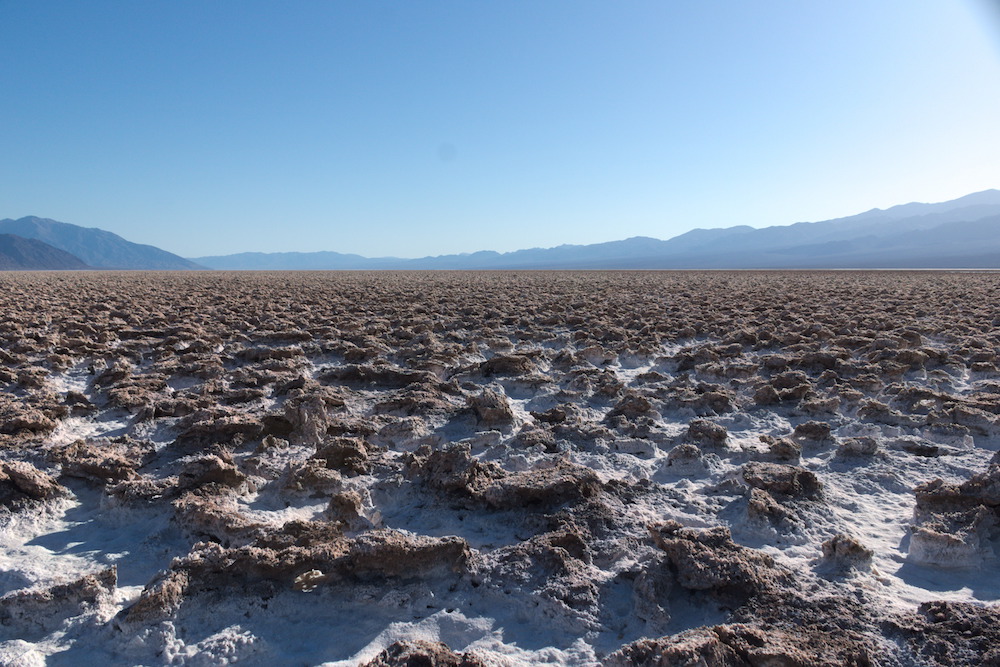
When to Visit Death Valley
Summers are not only hot, but dangerously hot. I’d caution against visiting Death Valley National Park in summer. Shoulder seasons can still be warm, but as you get into winter, you need to pay attention to the sun. There’s limited daylight hours.
I visited in mid November. Temperatures varied dramatically over the day. Mornings, and places at higher elevations like Dante’s View, were cold. But we were at Badwater Basin at about 2:00 in the afternoon and it was definitely bordering on hot. Additionally, the sun set at 4:45 pm, so even though we stayed in the park, there were limited options of things to do in the evenings.
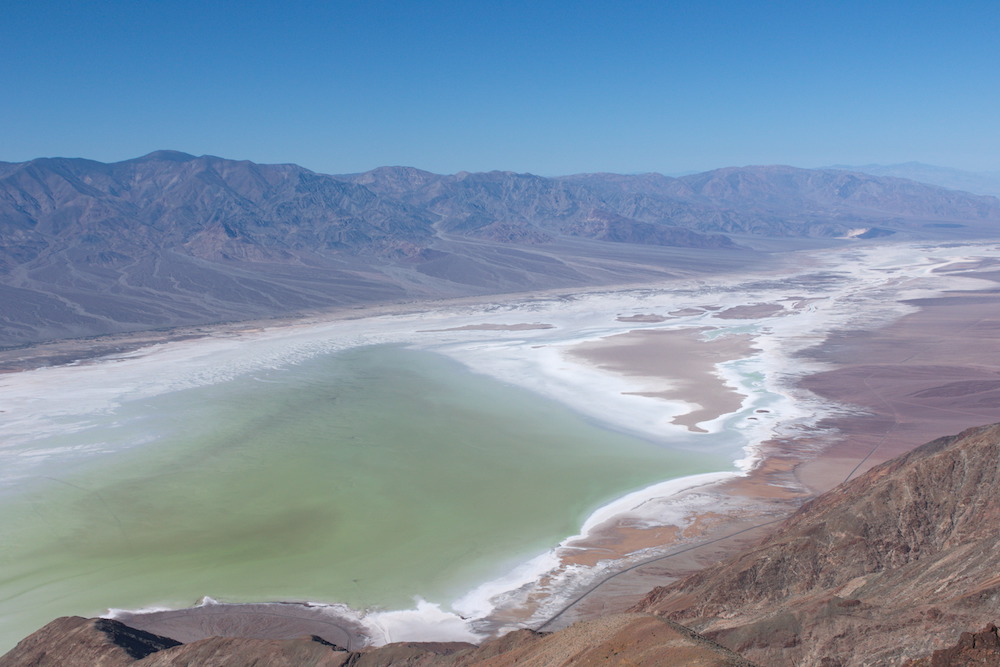
Where to Stay in Death Valley
If you’re visiting the park for more than one day, it makes sense to stay inside Death Valley National Park. There just really isn’t a lot of options around, so if you insist on staying outside the park, plan on adding a minimum of an hour of driving each way.
If you come from the east, Las Vegas is a two hour drive away, but the town of Pahrump is closer and still has several hotel options. From the west, you’d be looking at the town of Lone Pine.
Inside the park, you have Furnace Creek and Stovepipe Wells which offer lodging. In our experience, Furnace Creek was closer to most of the things we wanted to do, but it was more expensive. We stayed in Stovepipe Wells and just added a little bit of extra driving.
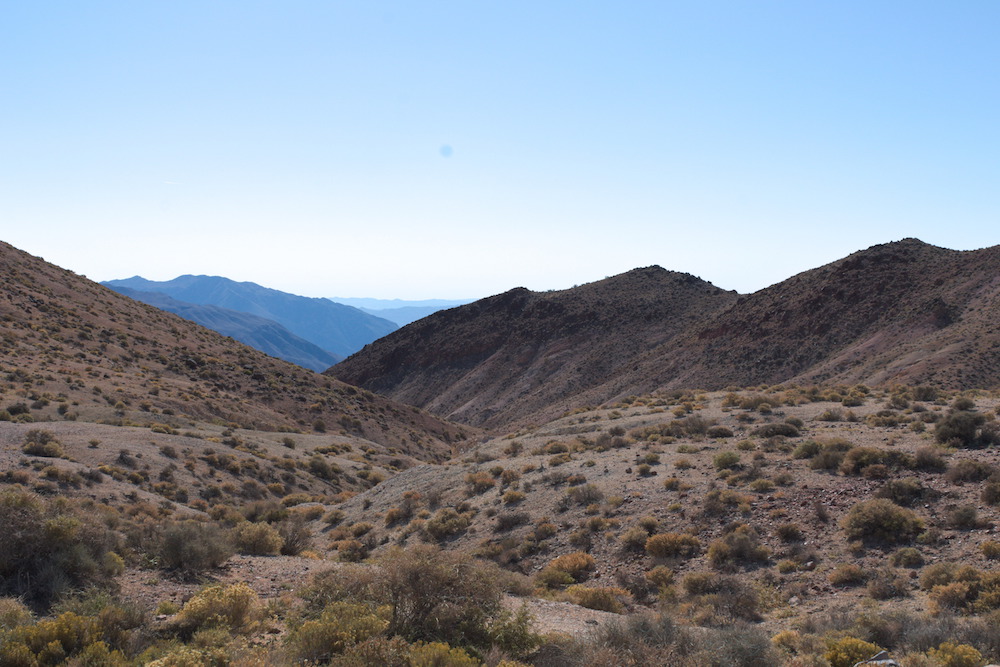
My Experience in Stovepipe Wells
Now I do have to talk a bit more about my experience at Stovepipe Wells.
The hotel was basic, but that was to be expected. There was a restaurant but when we visited, it was buffet only. The dinner buffet cost $25 per person, which felt like a lot for a buffet (and my mom and I knew we wouldn’t be eating that much). It’s also worth noting that the Saloon’s original menu was still displayed on the website and prices for a dinner sandwich were half the price of the buffet.
We were very frustrated by this and ended up with a sandwich from the General Store across the street for dinner (which was 100% overpriced). And if you think you’ll bring your own food to cook in your room, think again. When you check in, you have to sign a waiver saying you will not cook in the room.
So, given that, what’s my advice?
Staying in Death Valley, and even at Stovepipe Wells, has its perks. The location was great and the price was reasonable. My only disappointment was the food, which definitely led to some “hanger”. So, if you’re only staying one night and don’t want to spend a fortune on food (a real possibility if it’s buffet only and you have a group of people), get a small insulated bag and pick up some subs and snacks from whichever town you pass through on your way to Death Valley (Pahrump from the east or Lone Pine from the west). Honestly, if we had done that, I think we would have been a lot more positive about our stay.
As a note, there is a breakfast buffet as well, but that is a much more reasonable $10 per person. We made sure to get our full money’s worth. Ha!

Is Death Valley Worth Visiting?
Yes, it is worth visiting Death Valley National Park.
How Long Do You Need in Death Valley
How long you need in Death Valley really depends on your plans. At minimum, you’ll want one full day in Death Valley. This gives you enough time to do the two scenic drives and visit some of the highlights of the park like Badwater Basin, Dante’s View, and a few others. But if you plan to do some hiking, this may be cutting it close. For those interested in hiking or visiting any of the more out of the way sights in Death Valley (such as Darwin Falls or Ubehebe Crater), give yourself more time.

About My Visit
I visited Death Valley National Park in early November of 2023. In general, this is a good time to go, but there were a few small issues. Just three months earlier, the entire park was closed as it dealt with the repercussions of Hurricane Hilary which dumped 2.2 inches of rain in the park. For a place that averages just 2.15 inches of rain per year, it was devastating. The park closed for nearly two months to make necessary repairs.
While most of the highlights of Death Valley National Park were open, there were a handful of things we had to skip. Honestly though, I’m not sure when we would have done some of those other activities because we were pretty busy during our entire visit.
That said, we did get a once in a lifetime opportunity. Badwater Basin was filled with water during our visit. A couple we met at the basin said they had been visiting Death Valley for over 30 years and had never seen it like that. So I guess I’m willing to focus more on the positives.
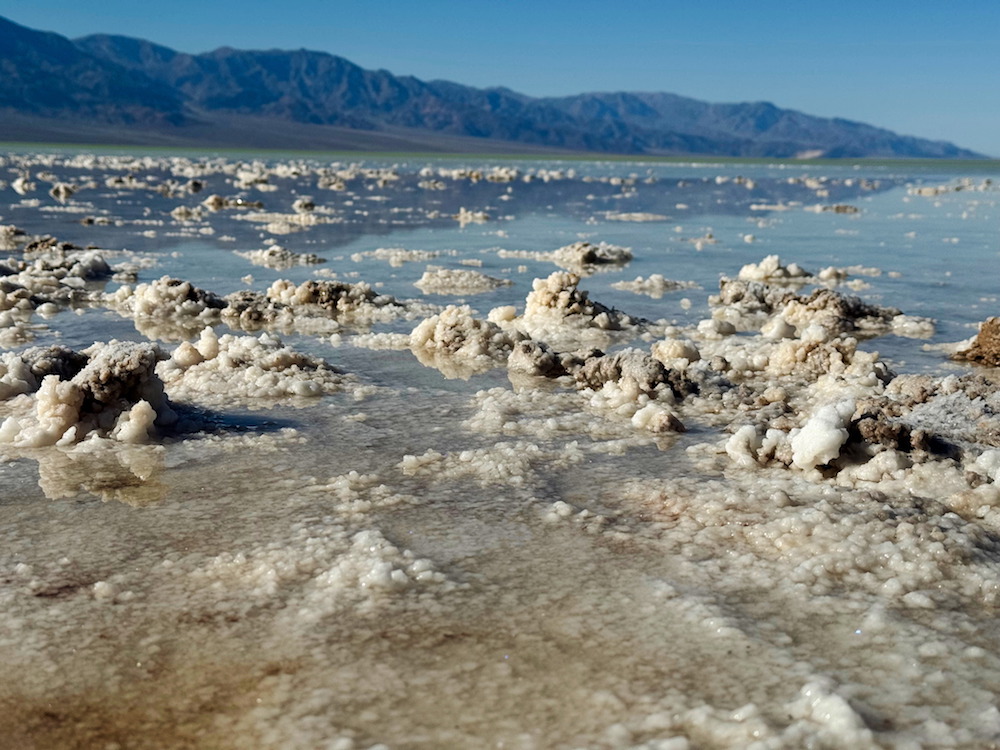
Final Thoughts
Death Valley National Park was much more interesting that I expected. I envisioned barren wasteland, but that’s not really what I found here. With it’s scenic drives and viewpoints, I found that my mom and I were able to stay pretty busy during our entire visit to Death Valley. It was a great experience, but it could have been a little better had we not had the hanger issues.
Continue Your Adventure
Death Valley Itinerary: If you have one or two days, check out my Death Valley Itinerary.
Joshua Tree National Park : I combined my visit to Death Valley with a trip to Joshua Tree National Park for more hiking opportunities and great scenery. Plus check out my 1-2 Day Itinerary.
More from Las Vegas: I visited Death Valley as part of a 7 day road trip from Las Vegas that also included Joshua Tree. For another road trip from Las Vegas, check out this 10 Day Utah National Parks Itinerary.
US National Parks: Start planning your national park vacation with my US National Park Travel Guide. You’ll find information about each park, photos, itineraries, budget tips, advice for non-hikers, and more. Plus, don’t forget to book your timed entry reservations in advance!
